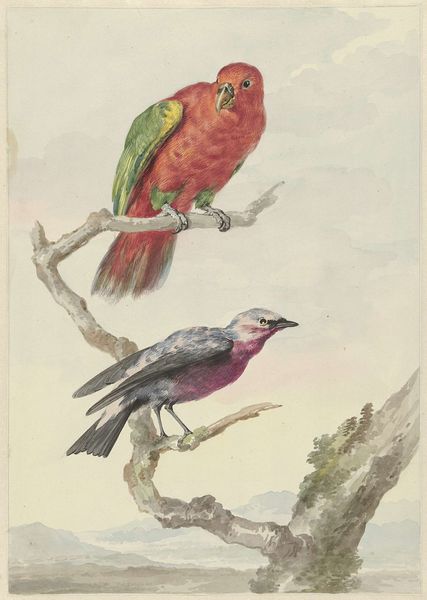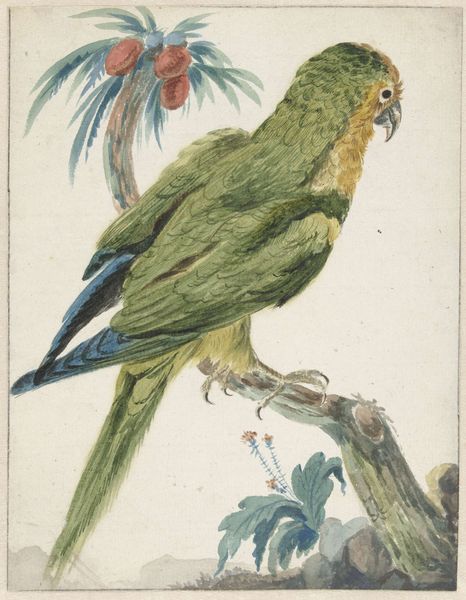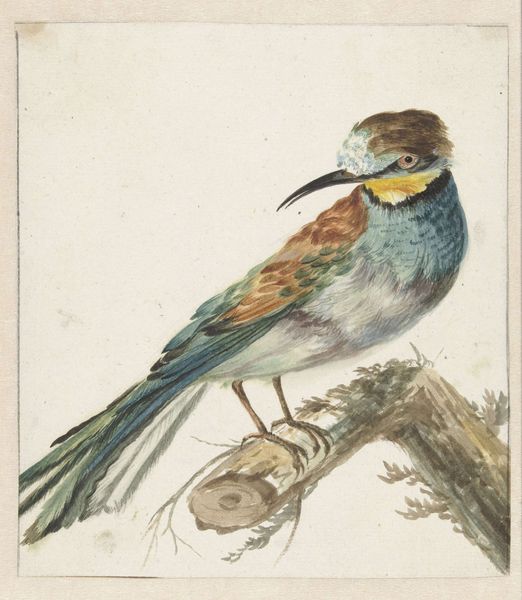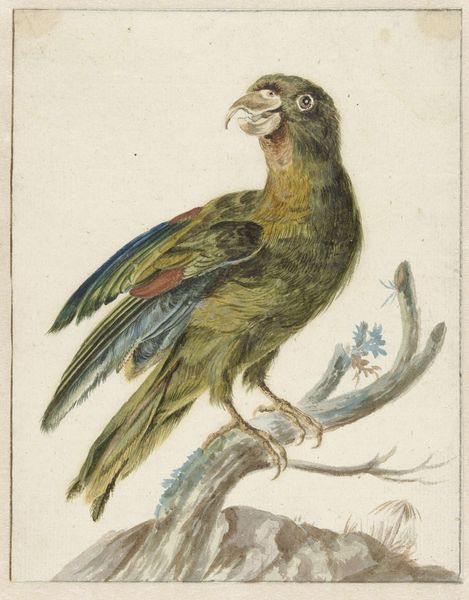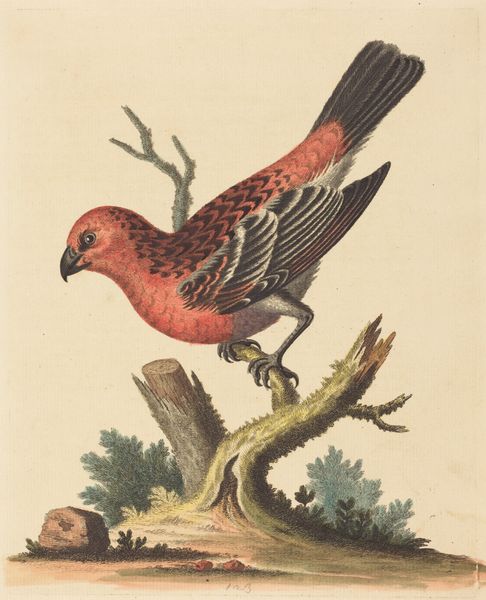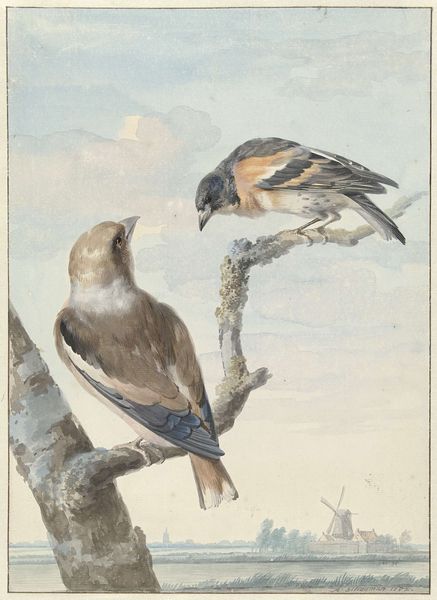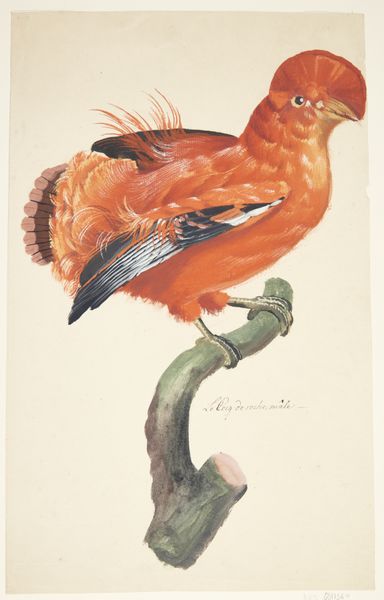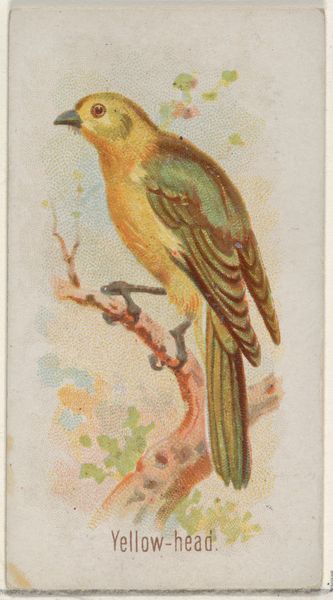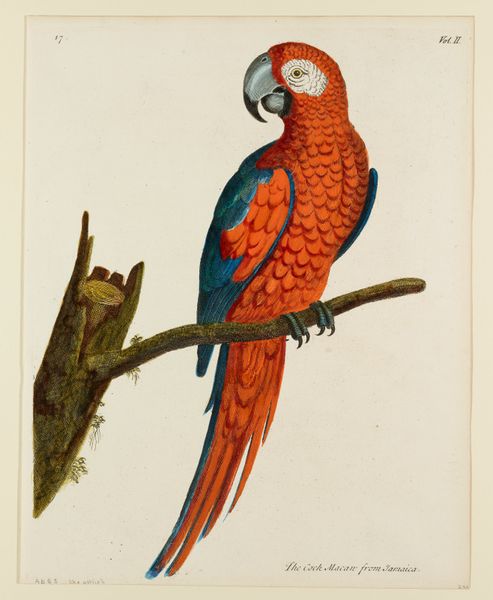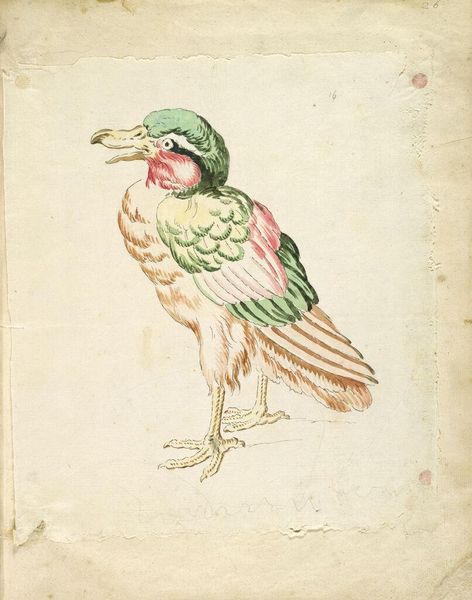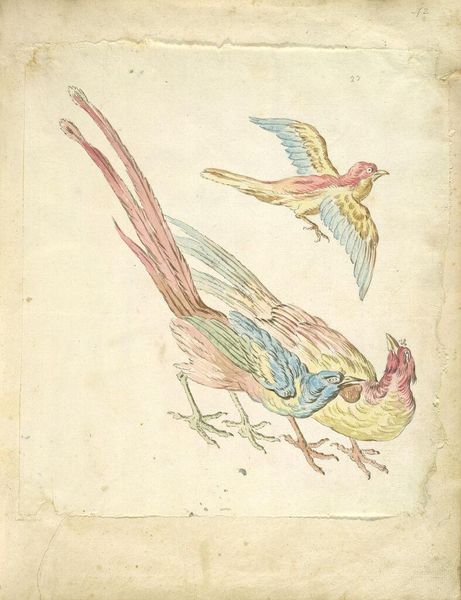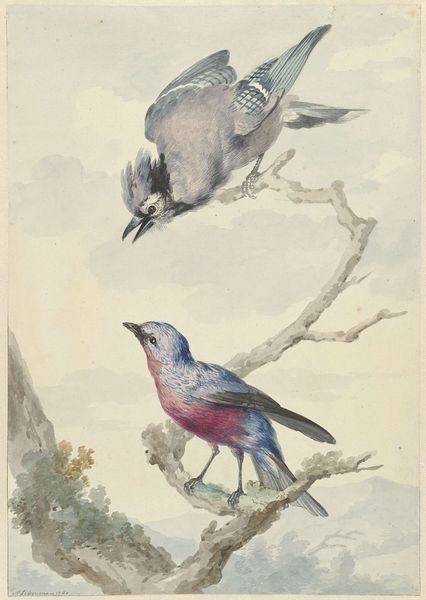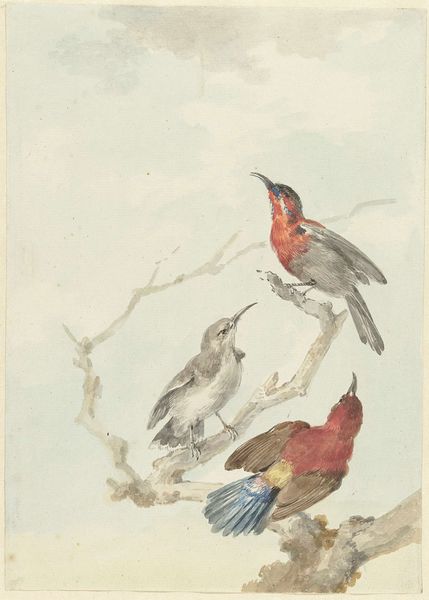
painting, watercolor
#
painting
#
landscape
#
oil painting
#
watercolor
#
coloured pencil
#
15_18th-century
#
watercolour illustration
#
watercolor
Dimensions: height 366 mm, width 258 mm
Copyright: Rijks Museum: Open Domain
Curator: So, we have here Aert Schouman's "Two Exotic Birds," painted in 1762, using watercolor and coloured pencil— a mixed-media approach. It currently resides here at the Rijksmuseum. Editor: Gosh, they are lovely! I'm struck by the orange bird. It looks so quizzical, as if asking a question with its upward-pointing beak. The smaller, greener bird beside it seems more pensive, as though deep in thought. What an interesting conversation they must be having. Curator: Absolutely! Schouman had an aviary and was prolific in this subject matter. Look at the detail in the larger bird's plumage and its curious head-crest; there is great care in replicating texture, no doubt through layering paint and perhaps a dry-brush technique. Considering this level of craft and access to these avian specimens, one has to consider class and commerce during the mid-18th century. Editor: Right, a luxurious study indeed! The colours, though muted, carry such an intrinsic beauty—the rust and fawn blending seamlessly, evoking the serenity of an untamed natural setting. They make me imagine a balmy island breeze... or a whispered secret shared amidst tropical leaves. Curator: The landscapes in Schouman’s work certainly provide more than mere backdrop, although somewhat indistinct, they do add to a sense of environmentalism and an ecosystem, even on the periphery of the focal point. The method allows us to also question authenticity, what we think of these birds against a somewhat imagined habitat; is the work then an example of invention or of genuine natural history? Editor: Well, it feels wonderfully timeless. Even today, they offer a reminder of the joy to be found simply by looking closely. Perhaps they are indeed "exotic," from a bygone era now, yet somehow deeply familiar. Curator: In light of such reflections, the beauty in examining these kinds of works lies in identifying the methods and origins of their creation; which allow us to question production and provenance further. Editor: Precisely! And isn’t it delightful to get lost in the feathered details, the quietude they invoke?
Comments
rijksmuseum about 2 years ago
⋮
The bright orange paint Aert Schouman here used to render the plumage of this Andean cock-of-the-rock jumps off the paper. The artist was already praised for his intense paint colours in the 18th century. Particularly admired were his orange, red and peacock blue. Like many 17th and 18th-century artists, Schouman prepared his paints himself in his workshop from recipes handed down from master to pupil.
Join the conversation
Join millions of artists and users on Artera today and experience the ultimate creative platform.
